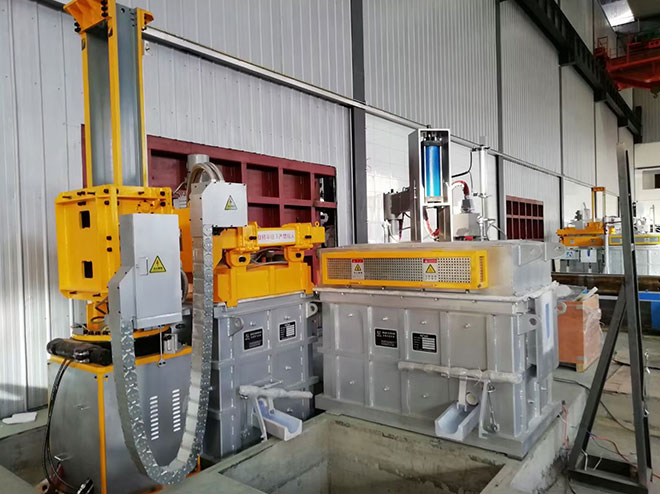In the degassing refining process of aluminum alloy and non-ferrous metals, it often happens that non-metallic inclusions such as oxides are generated and hydrogen is mixed with molten metal. Therefore, only when the non-metallic inclusions are separated or removed from the molten metal before processing, can the high quality after processing be obtained. In addition, by introducing molten metal containing a solid dissolved gas mainly containing hydrogen into the mold, small cavities called “pinholes” may be generated after solidification, resulting in a decrease in the density of the finished product. In addition, the presence of inclusions attached to the gas may cause various defects in the product after processing.
In view of the foregoing, prior to the casting operation of aluminum alloy non-ferrous metals, the molten material is degassed to improve the quality of the molten metal. In this degassing refining operation, a large number of small bubbles of inert gas such as argon or nitrogen are blown into the molten metal, so that the solid dissolved gas and non-metallic inclusions are trapped or captured by the inert gas bubbles and float for removal.

The degassing unit for aluminum continuous casting is placed between the holding furnace and the casting machine along the molten metal processing line. The degassing device continuously receives molten metal through the inlet. The upper opening of the degassing container is covered by a cover, and on the downstream side, the partition extends downward in a direction crossing the fluid flow. It is used to prevent metals including oxides and other floating objects from flowing into the subsequent treatment process.
The residence time of the molten metal in the processing chamber upstream of the partition can extend the duration of the degassing operation. The rotating gas diffusion device is inserted through the hole in the cover and is located in the molten metal in the degassing vessel. The lower part of the gas diffusion device is located in the molten metal and at the same time is located in the lower part. Through the rotating motion, the inert gas is ejected from the lower part of the gas diffusion device, and the inert gas of the fine bubbles diffuses into the molten metal at the same time.
In addition to the aluminum degassing refining as described above, a burner for heating the metal in the container is required to heat the metal remaining in the container. Otherwise, the metal remaining in the container begins to solidify, which makes it difficult for the metal remaining in the container to melt smoothly with the newly introduced metal. In addition, when maintenance work is required in the degassing vessel, the operation of the burner is essential to remove the molten metal remaining in the vessel.

